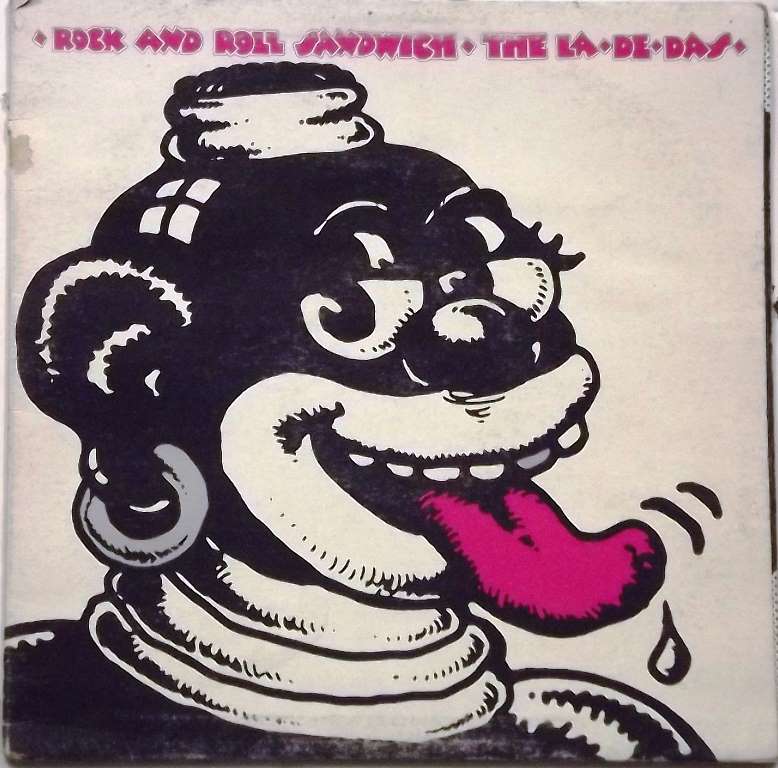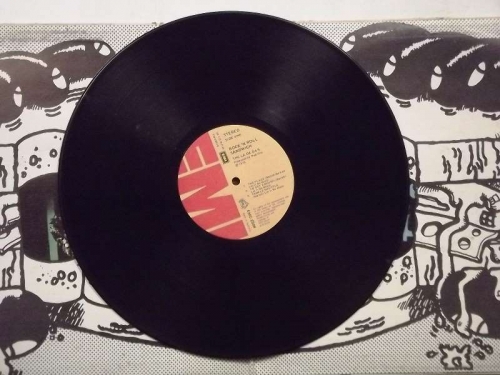

| Product Code: | EMC2504 |
| Artist: | La De Da's The |
| Origin: | Australia. |
| Label: | EMI (1973) |
| Format: | LP |
| Availability: | Enquire Now |
| Condition: |
Cover: G
Record: VG
|
| Genre: | Blues , Rock U |
Very smart clean vinyl with a gatefold cover showing minor shelf wear, ring wear on rear and small sticker removal tear.
The band which eventually became The La De Das was started by three young musicians from the rural Huapai district, near Auckland in the North Island of New Zealand. Friends Kevin Borich, Brett Neilson and Trevor Wilson were all from Rutherford High School in Te Atatu. The Mergers formed in late 1963 as a Shadows-style instrumental group and began playing local dances and school socials, but The Beatles' visit in June 1964, and the emergence of The Rolling Stones, crystallised the need for change of style and a lead singer. TrVery smart clean vinyl with a gatefold cover showing minor shelf wear, ring wear on rear and small sticker removal tearevor Wilson suggested a friend from nearby Mt Albert Grammar School, Phil Key, who joined as vocalist and rhythm guitarist.
The group decided that "The Mergers" failed to reflect the toughness of their music, so began searching for another name. One promoter even changed their name to The Gonks for an early 1965 gig at a summer carnival. They decided on The Criminals, but Key's mother was not impressed and after rehearsals one night at the Wilson house she jokingly suggested instead that they call themselves "something nice, like the la-de-das ...". Key loved it and the name stuck.
By early 1965 their weekend hobby had taken off and they were getting regular bookings on Auckland's booming dance circuit.[citation needed] Their first recordings were made in an Auckland 2-track studio. They cut two tracks written by Borich, "Ever Since That Night" and "Little Girl" (co-written with Trevor Wilson). The single was released on the Talent City label in April 1965, but it only sold to friends, family and fans.
In November 1965 they got a major break when they were called up to fill in at The Platterack. The La De Da's went over well and were offered further bookings at the club. After Phil Key finished school in December, the band turned professional. The Platterack took on The Las De Da's as the resident band, replacing the Dallas Four. The band received £12 per week and were soon packing out the club on a regular basis.[citation needed] It was here they linked up with one of the regular patrons, Bruce Howard, a classically trained keyboard player. Bruce auditioned ast the next rehearsal and joined the band. He and Trevor Wilson became the creative core of the band, writing all their original material.[citation needed]
In January 1966 Stebbing was given an import copy of a Changin' Times album by Philips A&R man John McCready, and he immediately tagged the track "How Is The Air Up There?" as possible song for a local band. The La De Da's performed a demo, resulting in them cutting a recording and signing to Zodiac for both management and production, with their recordings distributed through Phillips. They recorded a series of hits through 1966-67,[citation needed] which are now regarded as classics of 60s R&B.[citation needed]
Their third single, a John Mayall song called "On Top Of The World", eventually peaked at #2.[citation needed] Stebbing then offered them residency at his Galaxie nightclub and they were regulars on the C'mon TV show. As indicated by the choice of B-side, the band were now well and truly into their Mod phase, setting Auckland trends with plaid trousers, satin shirts and buckle shoes.